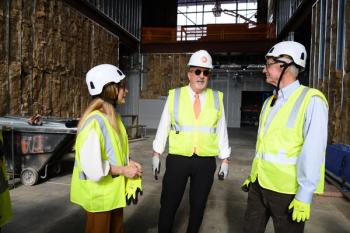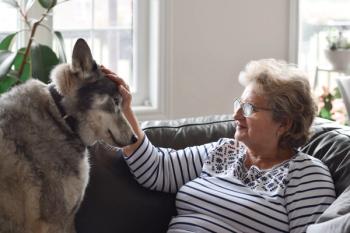
Veterinarians should provide more cost-effective pet healthcare
Insistence on the highest medical standards in every case is hurting the veterinary profession.
In the past two years there have been many articles in the veterinary literature addressing the factors contributing to declining veterinary visits. No doubt these factors are significant, but I believe the profession has ignored the effect of changes in the small animal practice model and its attendant standard of care issues on many small animal practitioners for more than a decade. Having sold my rural Minnesota small animal practice of 40 years and visited many rural practices in the past three years as a relief veterinarian, I've had considerable experience dealing with this matter.
I want to first acknowledge that I am not a dissatisfied, overworked and undercompensated veterinarian with 46 years of bad practice experiences "stuck in my craw." I sold my solo, profitable-and-growing, 32-hour-workweek practice for a good price in a community with an unemployment rate of 18 percent, the highest in the state at the time. Though now retired from practice ownership, I feel compelled to express my concerns about a profession I still love.
The past 20 years have seen many technological advances in veterinary care. And the veterinary colleges, true to their charters, have incorporated these changes into the standards of care taught to veterinary students. These standards of care have been adopted by small animal practice organizations and legally enforced by state boards of veterinary medicine. These changes have forced practices to provide higher-quality care with corresponding fee increases to all clients, regardless of their income level.
However, the money allocated to veterinary services is often a fixed item in many household budgets. As fees and standards of care have increased, those in middle- and low-income groups have had to make difficult decisions about their ability to afford veterinary care. And many have decided not to seek that care due to cost, leading to decreased visits in the profession as a whole.
In contrast, many of the few practices showing recent growth are rural clinics located in small towns 10 to 50 miles from large urban population centers. These practices are growing because they provide the more cost-effective veterinary care that many urban pet owners are begging for.
As many 30- to 40-year veterans of rural small animal practice can attest, we've been successfully performing a host of quite technical medical and surgical treatments for years without always utilizing many of the recently recommended procedures. For example, take presurgical blood tests on obviously healthy adult pets. Even in human hospitals, presurgical blood tests are not always performed on young adults—insurance companies have deemed them to be cost-ineffective and therefore do not cover them. Another example is the all-out quest for a definitive diagnosis. In some urban practices this is a major contributor to increased cost of pet care. But we all know that response to therapy is a legitimate diagnostic aid that also reduces the cost of care.
By making many procedures both optional and more cost-efficient, rural small animal practitioners have been able to satisfy their own clients in addition to visiting urban pet owners seeking more cost-effective care. Because of lower overhead, greater distances from referral centers and emergency clinics, and a less-litigious client base, they have actually handled more challenging medical and surgical cases than many of their urban colleagues. Some have achieved remarkably profitable practices, often in unlikely demographic locations.
The key to practice growth in today's economy is to treat clients fairly. They need to be shown empathy for their financial hardships and given broad options on levels of care that might be affordable for them. They need to be honestly informed of the risks associated with choosing a more moderate level of care, but they also need to be informed if the chances for a resulting negative outcome are low.
In contrast, I believe the current small animal practice model fosters exaggerated perceptions of legal liability that serve to rationalize the need for high and inflexible levels of care. If legal liabilities were a legitimate argument for defensive practice methods, then veterinary malpractice insurance rates would be significantly higher than they currently are.
The stringently high standards model also creates a situation in which the human-animal bond can be abused. That is, it can be used to garner approval for procedures that benefit average transaction fees more than patient health and cost-effective use of the client's resources. It may feel great to bask in the glow of client adulation when these clients feel everything humanly possible was done for their pet. But the way things are going, that feeling will be more difficult to experience in the future.
What's more, in poor economic times, even formerly compliant pet owners begin to decline certain elective procedures. For the most part, they observe that their pets seem to do quite well without that annual exam, heartworm test, vaccination or blood profile. They know they're taking some risks, but they're playing odds that they start to realize are much better than what they've been led to believe in the past. And they begin to question the cost-effectiveness of their veterinarian's previous recommendations when times were good. Unfortunately, this scenario has already played out for far too many pet owners.
The image of our profession has been tarnished and veterinary fees have reached a level where most pet owners cannot afford intensive pet care unless they have insurance. Though some would say fees had been too low for too long, we've unfortunately overplayed our hand. Current fees are now both impractical and cost-ineffective for an increasing percent of pet owners and we are losing our credibility and pet owner confidence.
In my practice I could have netted well over $200,000 had I implemented the experts' policies for better profitability. But my conscience would not have been clear and a lot more of my clients' pets would have been euthanized.
Our market has been fundamentally changed for the foreseeable future both by external factors and our own missteps. Doesn't the success of some rural practices mean the current model needs to be made more accommodating for pet owners? The timeless refrain of my community's native son seems appropriate: "The answer, my friend, is blowin' in the wind."
Brian E. Toivola, DVM, lives in Hibbing, Minn. The views expressed in this commentary do not necessarily reflect those of dvm360.
Newsletter
From exam room tips to practice management insights, get trusted veterinary news delivered straight to your inbox—subscribe to dvm360.




